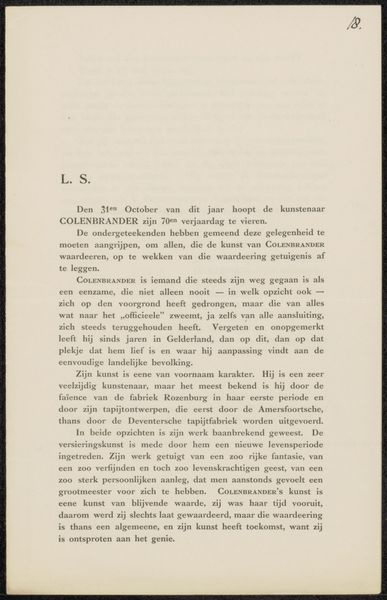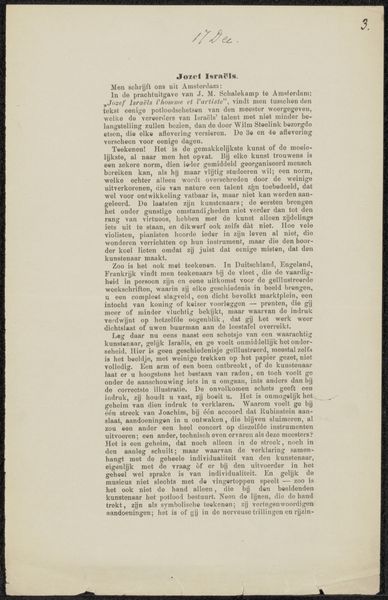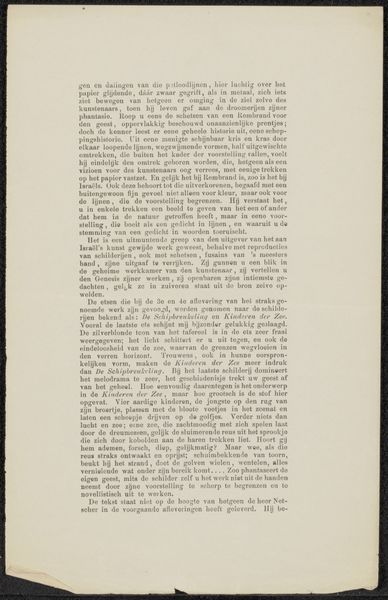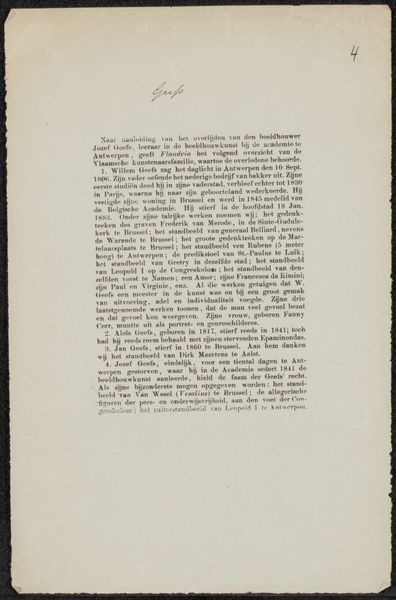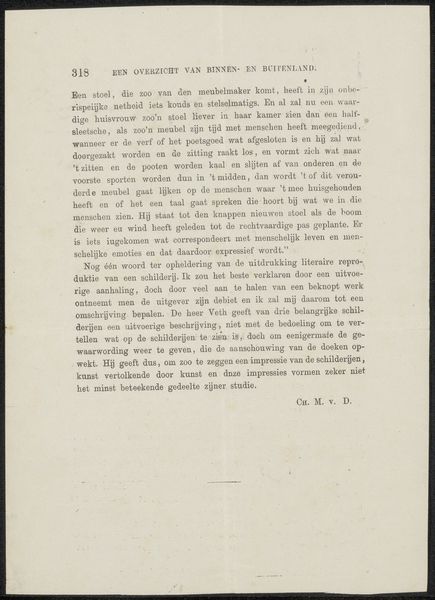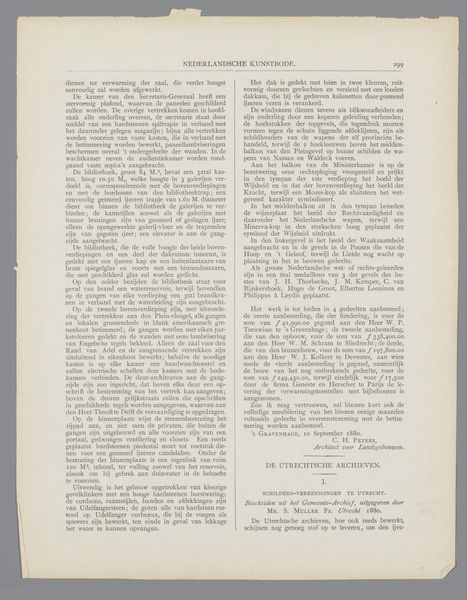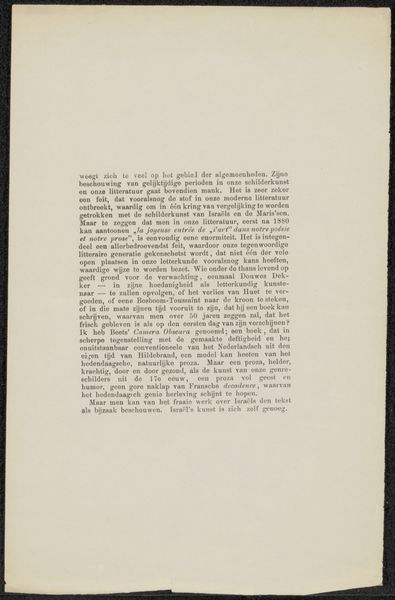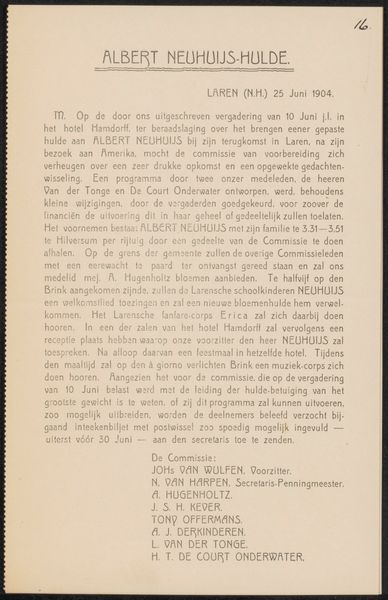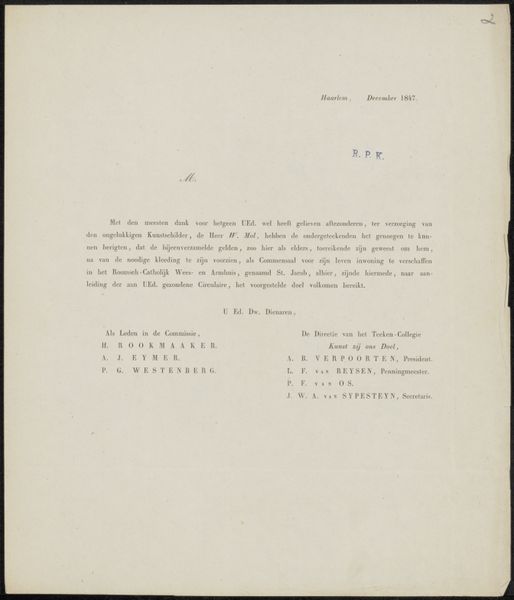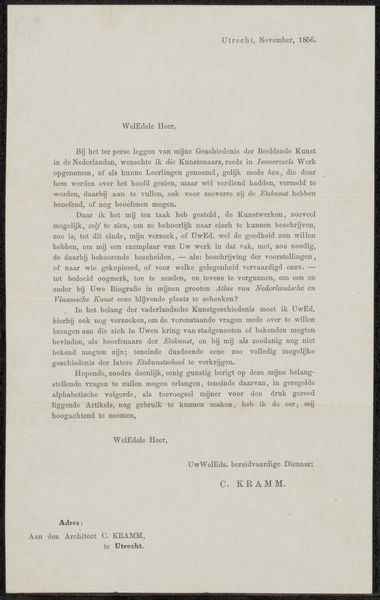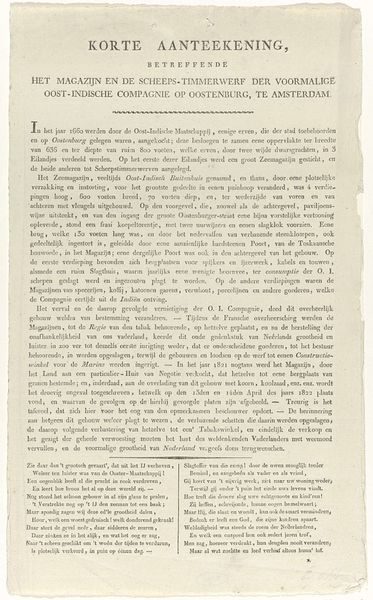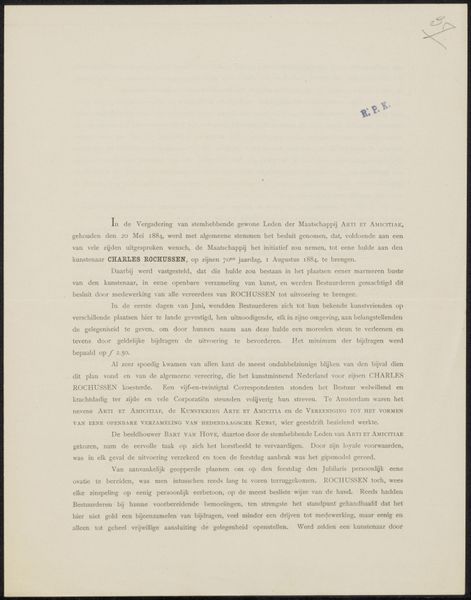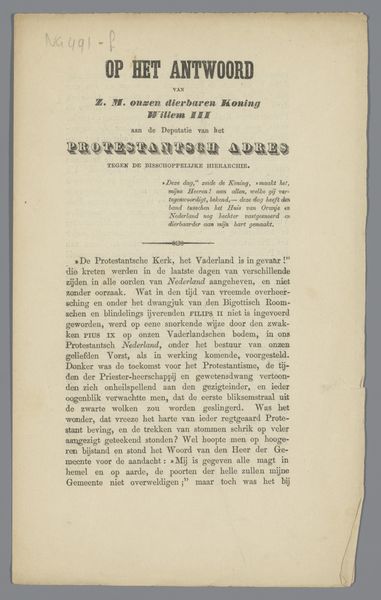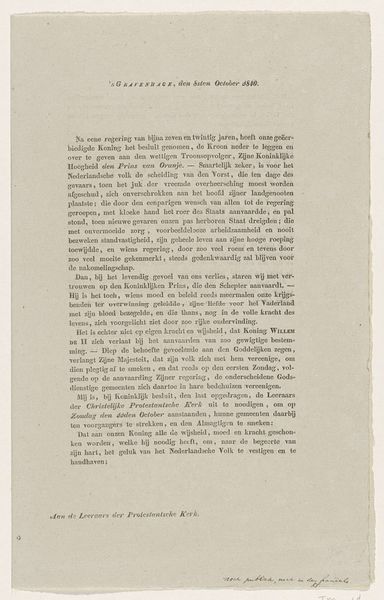
Artikel betreffende Petrus Johannes Schotel Possibly 1846 - 1847
0:00
0:00
drawing, print
#
drawing
# print
Copyright: Rijks Museum: Open Domain
Curator: Here, we have a page from "Artikel betreffende Petrus Johannes Schotel," likely from 1846 or 1847, attributed to Anna Louisa Geertruyda Bosboom-Toussaint. It is realized as a print over a drawing. Editor: The overwhelming feeling is claustrophobia. It's dense with text, the margins are slim, and it gives the impression of being tightly packed, almost airless. It appears so fragile. Curator: That sense of fragility is interesting given its form as printed text meant for wider distribution. The text reflects on a drawing by the marine painter Petrus Johannes Schotel, and then it plunges into this incredibly vivid and emotionally charged description of the sea. Bosboom-Toussaint seems to imbue it with a quasi-religious power but one entwined with destruction and death. The female figure implied certainly resonates. Editor: There’s a dramatic shift. It starts discussing Schotel's drawing but transitions into this dark romantic personification of the sea. It seems a meditation on nature's sublime indifference. Note that her vision relies purely on language; that the description stems directly from engagement with textual discourse about an unseen artwork by another person creates meaning in and of itself. Curator: Exactly. It underscores how art, even mediated through text, becomes a conduit for contemplating larger existential themes – the sea embodying both life and death, hope and despair, a theme so powerful at the time considering colonial power dynamics at sea. Editor: Ultimately, this piece's strength lies in the inherent tension. We can view it in terms of binary oppositions. Life and death. Art and Text. Seen and unseen. And through close study, new perspectives are made available. Curator: Yes, I would agree. This page presents not just a visual encounter but an opportunity to explore how the social, political, and emotional landscapes of the time shaped its understanding of nature, art, and life itself.
Comments
No comments
Be the first to comment and join the conversation on the ultimate creative platform.
